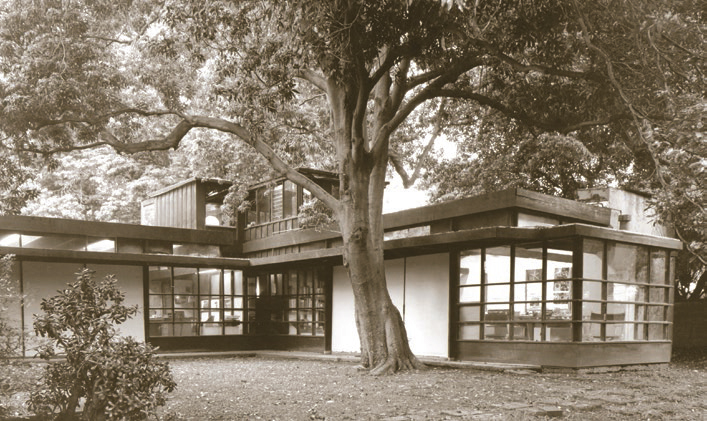8 Great Modern Masters - Page 2
 |
|
|
 |
|
|
|
|
1. RUDOLPH SCHINDLER
By all rights Rudolph Schindler (1887-1953) should have become a leader of the California modernists.
One of the first advanced European architects to arrive in California (Chicago in 1914, Los Angeles in 1921), Schindler had been set on fire in Vienna by the work of modern pioneers Otto Wagner and Adolf Loos.
He was influenced by the moral thinking behind the 19th century Arts & Crafts movement, imbibed the work of Wright, for whom he supervised important buildings, and was an original thinker on his own.
Schindler also absorbed California's balmy weather, colors, colorful characters, and romance. Some of his homes included sleeping porches, not as add-ons but as primary places to sleep.
His Kings Road house from 1922, for himself, his wife, and another couple, was as much a Bohemian pad and architecture studio as a traditional home. It had a concrete floor on grade, tilt-up concrete walls, and rooftop 'sleeping baskets' rather than bedrooms. Schindler treated the entire site, indoors and out, as the 'house.'
"Our rooms will descend close to the ground and the garden will become an integral part of the house," Schindler wrote of the house of the future in 1926. "The distinction between the indoors and out-of-doors will disappear. The walls will be few, thin, and removable. All rooms will become parts of an organic unit instead of being small, separate boxes with peepholes."
Many of his predictions came true 25-plus years later in Eichler homes, among others.
Schindler's Lovell Beach House, one of the earliest modern dwellings in America, was a dramatic composition with a double height living room, bedrooms, and terraces supported on tall concrete piers.
But Schindler's work was not embraced (until after his death) by proponents of the International Style—not even by Richard Neutra, once a friend who had lived with the Schindlers at Kings Road. And Schindler never accepted the International Style.
Schindler's buildings were quirky and expressive, drawing on many influences, including the Pueblo architecture of the Southwest, the Dutch De Stijl modernists with their abstract designs of intersecting volumes and planes, and Wright.
Schindler ran essentially a one-man office, turning out custom homes for clients whom he mesmerized. He was a master builder, closely supervising projects and pitching in. Especially in later years, many of his houses were built using minimal plans, with Schindler making design decisions on site.
In her book Five California Architects, Esther McCoy said of Schindler's work: "Its graceful phrasing never became automatic or mechanical."




